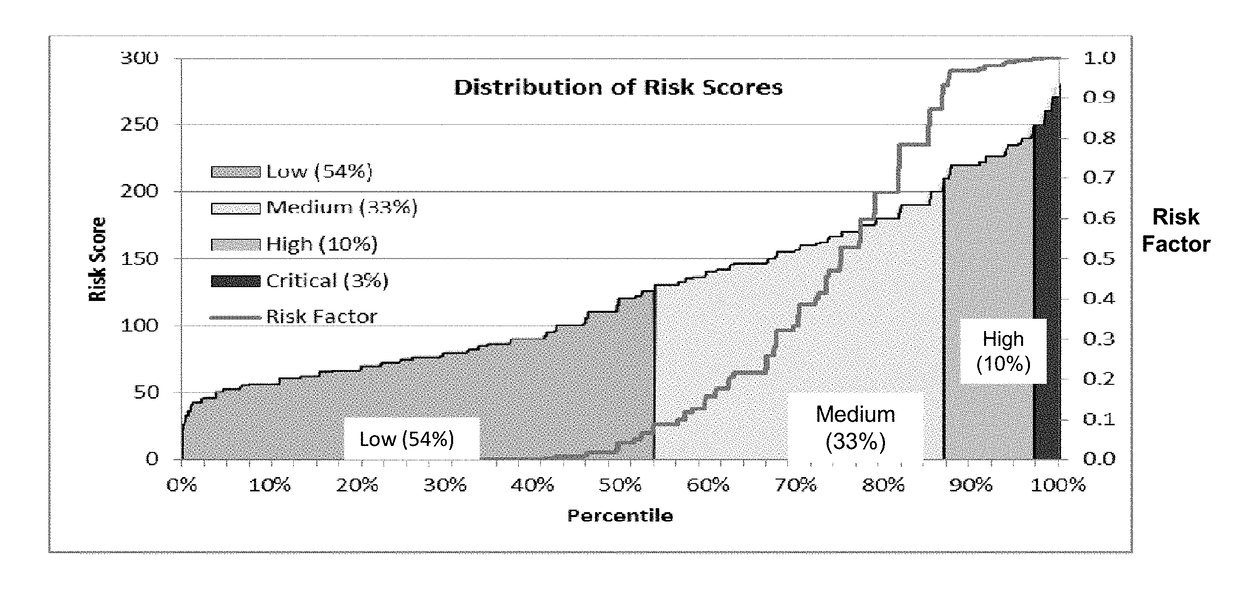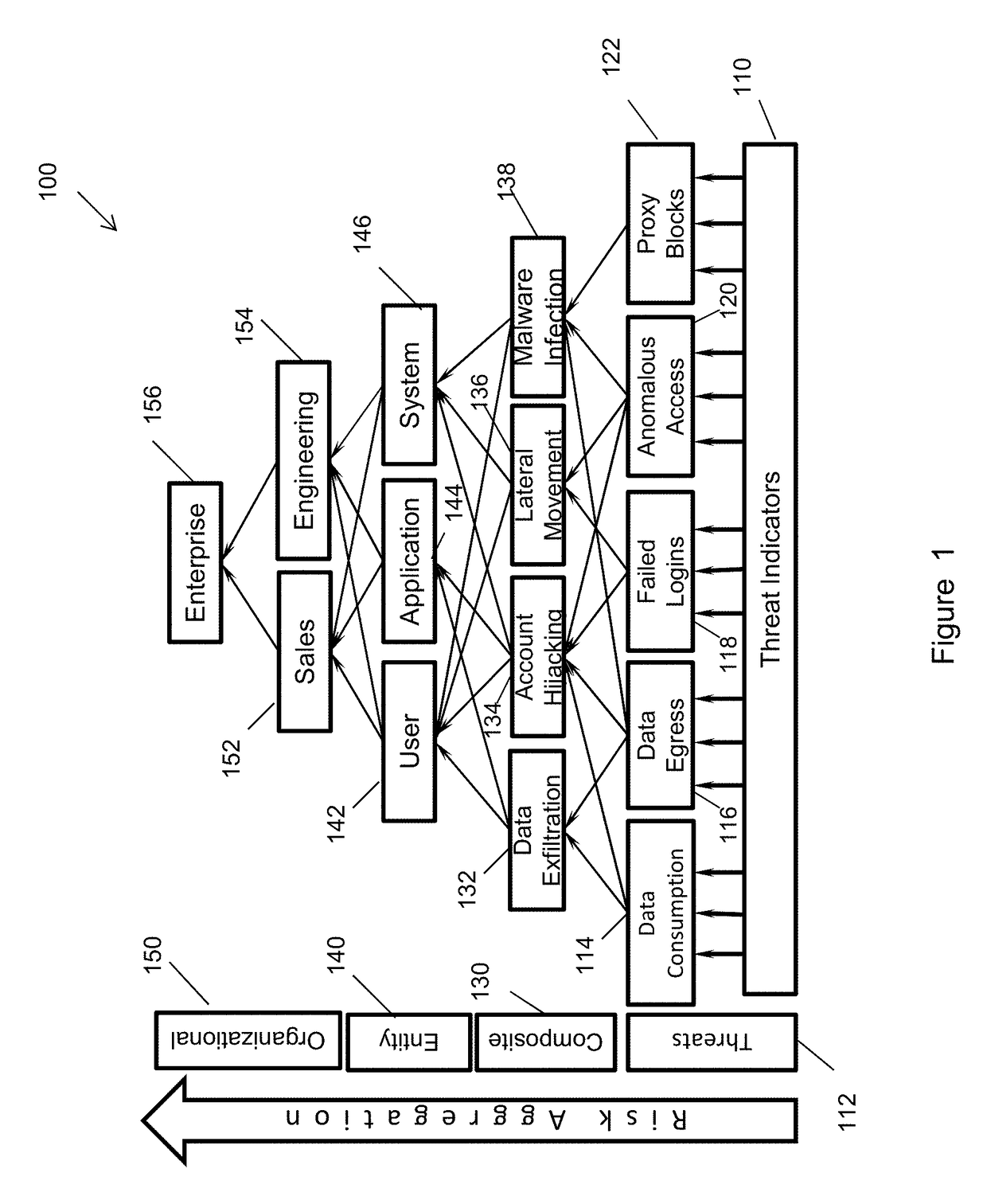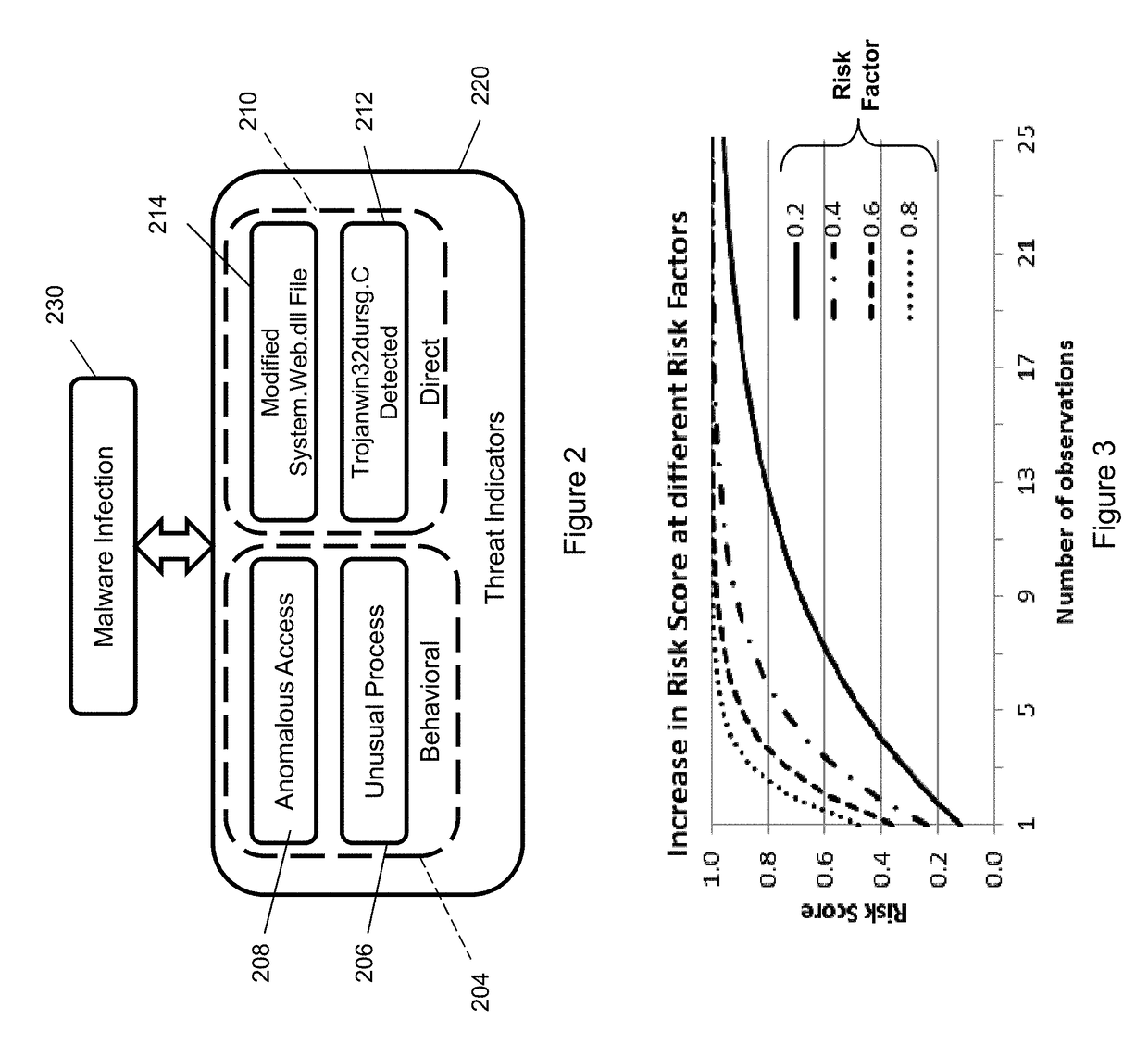Risk scoring for threat assessment
a threat assessment and risk scoring technology, applied in the direction of transmission, electrical equipment, etc., can solve the problems of increasing the risk increasing the risk of financial or reputational damage to the organization or employees, and often challenging the organization, so as to increase the risk and increase the likelihood of early detection of an attack
- Summary
- Abstract
- Description
- Claims
- Application Information
AI Technical Summary
Benefits of technology
Problems solved by technology
Method used
Image
Examples
Embodiment Construction
[0021]Applicant's prior U.S. application Ser. No. 14 / 811,732, filed Jul. 28, 2015, the disclosure of which is incorporated by reference herein, is directed to identifying threats to an enterprise by detecting anomalous behaviors of individuals operating within the IT infrastructure (computer network) of the enterprise by comparing their behaviors to behavioral profiles to detect anomalies that indicate a possible threat. This invention extends the invention of said prior application by identifying, evaluating and assessing events and behaviors assembling both behavioral indicators and direct indicators to form composite threat risks, and by quantifying (scoring) the composite threat risks in ways that enhance the detection of actual threats and that enable risks for different types of threats and for different entities and organizations to be assessed and compared.
[0022]FIG. 1 is a diagrammatic view of a multi-tiered hierarchical risk aggravation and evaluation process 100 in accord...
PUM
 Login to View More
Login to View More Abstract
Description
Claims
Application Information
 Login to View More
Login to View More - R&D
- Intellectual Property
- Life Sciences
- Materials
- Tech Scout
- Unparalleled Data Quality
- Higher Quality Content
- 60% Fewer Hallucinations
Browse by: Latest US Patents, China's latest patents, Technical Efficacy Thesaurus, Application Domain, Technology Topic, Popular Technical Reports.
© 2025 PatSnap. All rights reserved.Legal|Privacy policy|Modern Slavery Act Transparency Statement|Sitemap|About US| Contact US: help@patsnap.com



